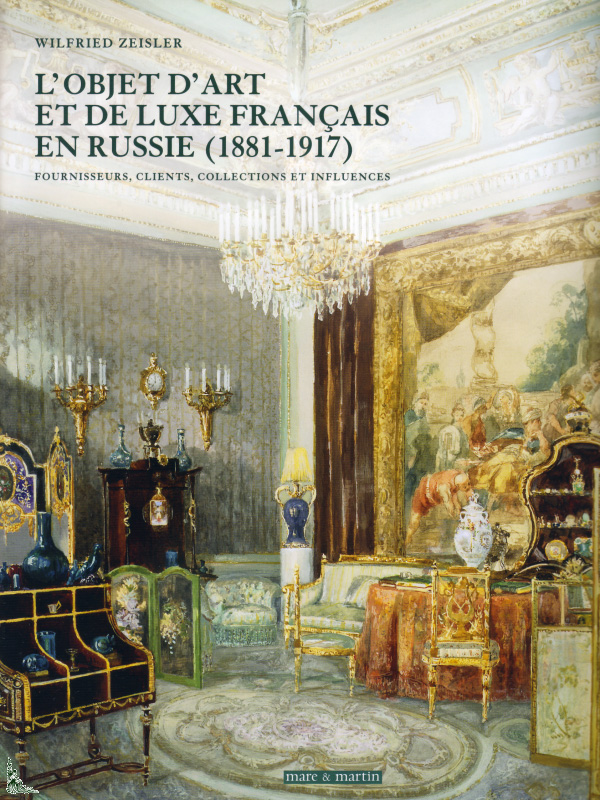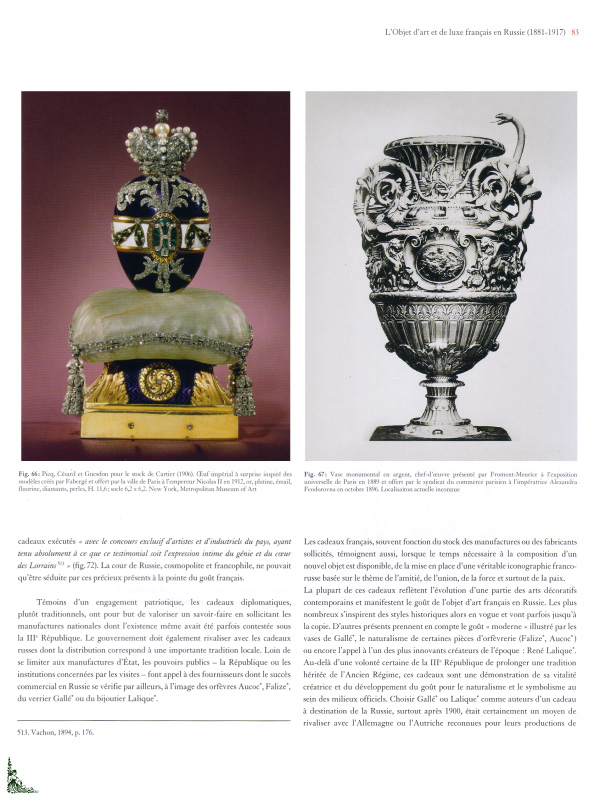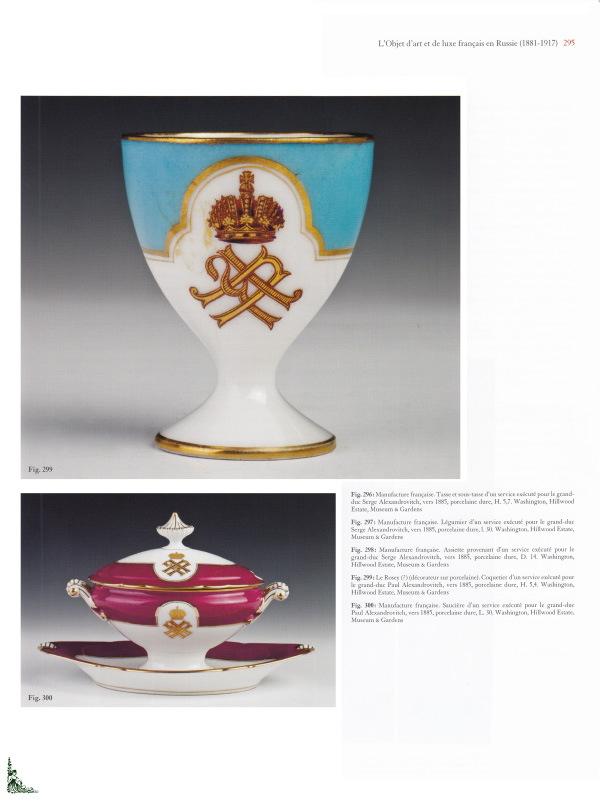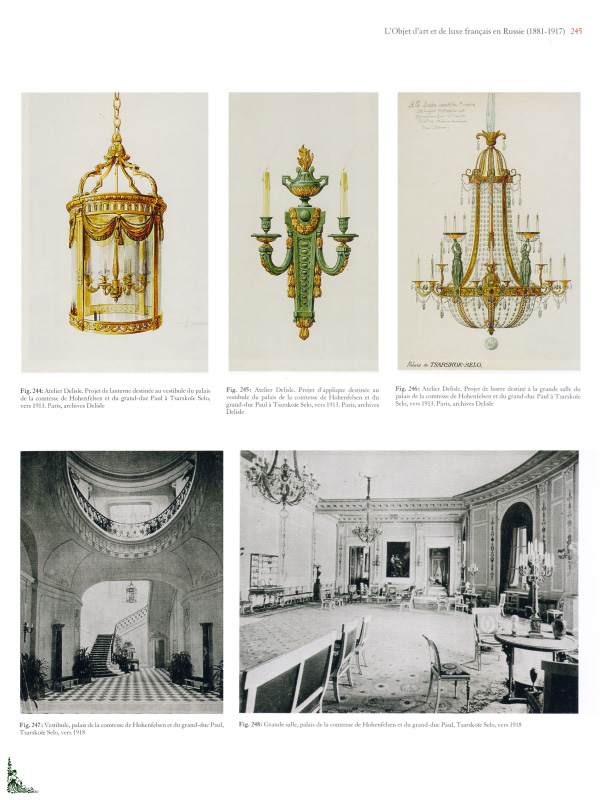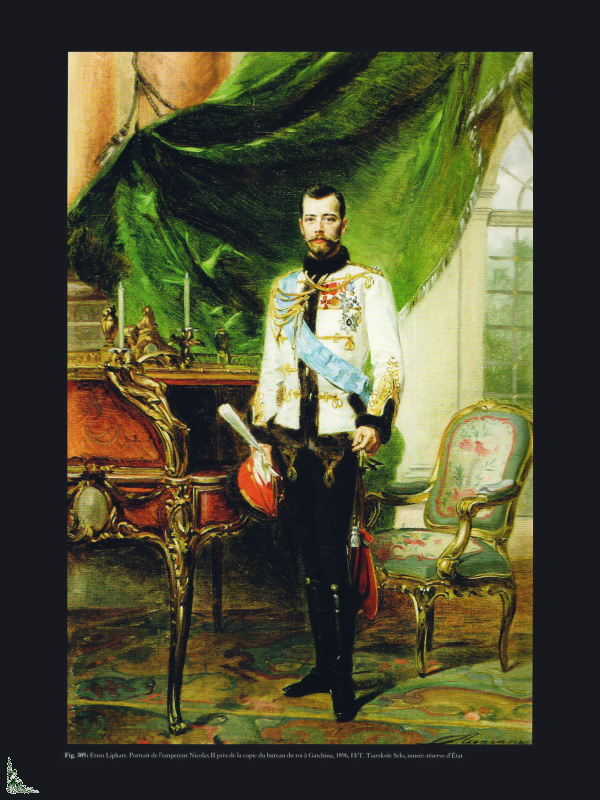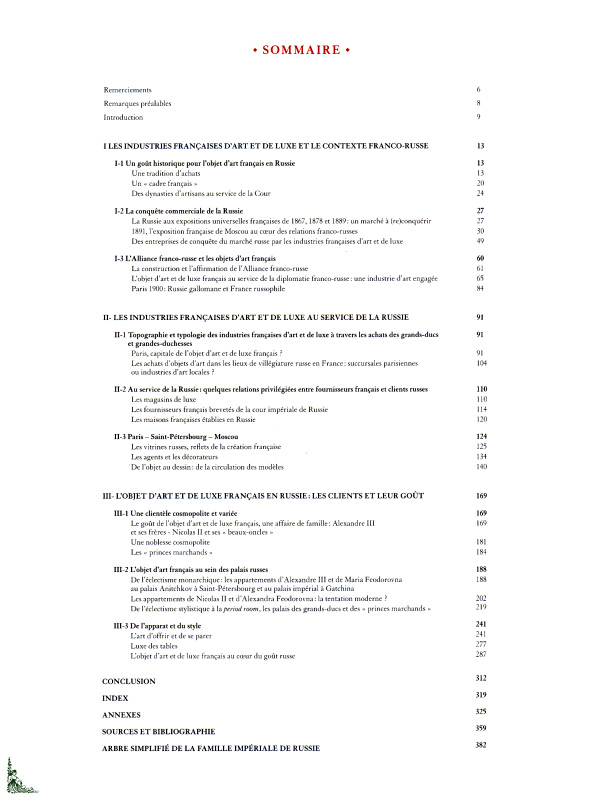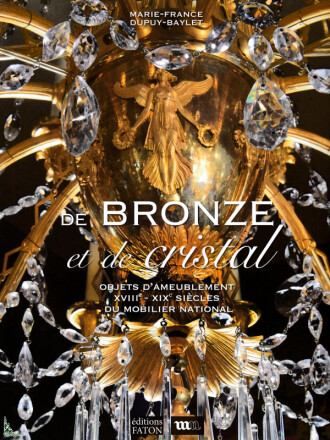Objects of art and French luxury in Russia (1881 - 1917)
Book information
| Author : | Wilfried Zeisler |
| Publisher : | Mare & Martin (2014) |
| Binding : | Hardcover w/jacket (384 full color pages) 9-½ inches x 11-½ inches |
| Language : | French |
| ISBN : | 978-10-92054-22-5 |
| EAN : | 9781092054225 |
Editorial Reviews
Objects of art and French luxury in Russia (1881 - 1917), by W. Zeisler, Ed. Mare & Martin, 9-½ inches x 11-½ inches ( 24 cm x 29.5 cm ), hardcover book with 384 full color pages
This hardcover book with 384 full color pages well illustrated and documented presents the objects of Art and French luxury in Russia (1881 - 1917) with suppliers, customers, collections and influences.
The Franco-Russian relations in the past have resulted in studies exploring various aspects, especially at the time of the Alliance that joined in the late nineteenth century the young French republic to the former empire of the Romanovs.
This book is a look at the bilateral French and Russian decorative arts, which he studied the taste at the heart of political, social, commercial and artistic interaction.
The first aspect of the taste of the French art object in Russia is analyzed from a historical point of view that justifies the favorable context in which it appears in the reigns sovereign Alexander III and Nicolas II. It rests on the age of the Franco Russian relations, recognized for their wealth in the 18th century and early 19th century.
In France, the Third Republic symbolically erected decorative arts to the level of art, which make their entry at the Salons. Benefiting from this new status and taste for the art object, French industries of art and luxury develop their exports to Russia, facilitated by the conclusion of the Franco-Russian Alliance. These political imperatives also result in the creation of art, diplomatic gifts wanting to reflect an official and modern art supported by the Republican regime. Suppliers and intermediaries take the opportunity to expand their trade with the Russian market and strengthen their success in Russia, where French models have some influence on local production. - furniture, bronze, textiles, metalwork, ceramics, glassware and jewelry - enjoy repeated stays of Russian clients in France.
This second point, centered on producers and methods of consumption, resulting in a thorough analysis which provides valuable information on the operation, production and business strategies developed internationally by the main actors of the French industry of art and luxury, grouping, individual producers, family businesses, factories, luxury shops, designers, agents or dealers. Raising the question of the use of models, it also raises questions on the concrete manifestations of artistic intra-European transfers.
The last part of the book is dedicated to Russian consumers in that they allow the use of art and French luxury, their role and for the heart of the collections and Russian palaces, from the early days of the Empire to the Revolution. From the Emperor to the great bourgeois Russian customers, some of which found some of their historical importance through this book, reflecting the social evolution of the country, claimed by the taste of made in France, belonging to a European elite. This study allows you to identify, through the history of the formation of these collections of art and luxury, a little-known aspect of the history of French taste, Russian and European.
Contents:
FRENCH INDUSTRIES OF ART AND LUXURY IN THE FRANCO-RUSSIAN CONTEXT
- A historical taste for French art object in Russia
- Commercial conquest of Russia
- The Franco-Russian Alliance and the French art
- Topography and typology of French industries of art and luxury through the purchase of the Grand Dukes and Grand Duchesses
- At the service of Russia, some privileged relations between French suppliers and Russian customers
- Paris - Saint Petersburg - Moscow
- A cosmopolitan and diverse clientele
- The French object of art within the Russian palace
- Pageantry and style
- INDEX
- ANNEXES
- SIMPLIFIED TREE OF RUSSIAN IMPERIAL FAMILY
The French texts are written by Wilfried Zeisler.
 Description française
Description française
L'objet d'art et de luxe français en Russie (1881 - 1917)
Détails du livre
| Auteur : | Wilfried Zeisler |
| Éditeur : | Mare & Martin (2014) |
| Reliure : | Relié sous jaquette (384 pages couleurs) 24 cm x 29.5 cm ( 9-½ inches x 11-½ inches ) |
| Langue(s) : | Français |
| ISBN : | 978-10-92054-22-5 |
| EAN : | 9781092054225 |
Description
L'objet d'art et de luxe français en Russie (1881 - 1917), de W. Zeisler, Ed. Mare & Martin, 24 cm x 29.5 cm, relié avec 384 pages couleurs
Ce livre de 384 pages couleurs très bien illustré et documenté présente les objets d'Art et de luxe français en Russie (1881 - 1917), avec fournisseurs, clients, collections et influences.
Les relations franco-russes ont par le passé donné lieu à des études explorant ses divers aspects, en particulier à l'heure de l'Alliance qui unissait à la fin du XIXe siècle la jeune république française à l'ancien empire des Romanov.
Cet ouvrage pose un regard bilatéral sur les arts décoratifs français et russes, dont il étudie le goût au coeur d'interactions politiques, sociales, commerciales et artistiques.
Le premier aspect du goût de l'objet d'art français en Russie est analysé d'un point de vue historique qui justifie le contexte favorable dans lequel il se manifeste sous les règnes des souverains Alexandre III et Nicolas II. Il repose en effet sur l'ancienneté des relations franco-russes, reconnues pour leur richesse au XVIIIe siècle et au début du XIXe siècle.
En France, la IIIe République élève symboliquement les arts décoratifs au rang d'oeuvres d'art, qui font leur entrée aux Salons. Bénéficiant de ce nouveau statut et de ce goût pour l'objet d'art, les industries françaises d'art et de luxe développent leurs exportations en Russie, facilitées par la conclusion de l'Alliance franco-russe. Ces impératifs politiques entraînent également la création d'objets d'art, cadeaux diplomatiques voulant refléter un art officiel et moderne soutenu par le régime républicain. Ainsi favorisés, les fournisseurs de l'objet d'art et de luxe en Russie, appartenant à des industries françaises variées - mobilier, bronze, textile, orfèvrerie, céramique, verrerie, bijouterie et joaillerie - bénéficient des séjours répétés de la clientèle russe en France. Fournisseurs et intermédiaires en profitent pour développer leurs échanges avec le marché russe et renforcent leur succès en Russie, où les modèles français ont une influence certaine sur la production locale.
Ce deuxième point, centré sur les producteurs et les méthodes de consommation, donne lieu à une analyse approfondie qui apporte de précieuses informations sur le fonctionnement, la production et les stratégies commerciales développées à l'international par les principaux acteurs de l'industrie française d'art et de luxe, regroupant, fabricants individuels, entreprises familiales, manufactures, magasins de luxe, décorateurs, agents ou négociants. Soulevant la question de la circulation des modèles, il permet aussi de s'interroger sur les manifestations concrètes des transferts artistiques intra-européens.
Le dernier volet de l'ouvrage est dédié aux consommateurs russes, à l'usage qu'ils réservent aux objets d'art et de luxe français, à leurs rôle et destinées au coeur des collections et palais russes, de l'empire aux premiers jours de la Révolution. De l'empereur au grand bourgeois, les clients russes, dont certains retrouvent une part de leur importance historique via cet ouvrage, reflet de l'évolution sociale du pays, affirmaient, par le goût du fabriqué en France, leur appartenance à une élite européenne. Cette étude permet donc de cerner, à travers l'histoire de la constitution de ces collections d'objets d'art et de luxe, un aspect méconnu de l'histoire du goût français, russe et européen.
Principaux chapitres de l'ouvrage :
LES INDUSTRIES FRANÇAISES D'ART ET DE LUXE ET LE CONTEXTE FRANCO-RUSSE
- Un goût historique pour l'objet d'Art français en Russie
- La conquête commerciale de la Russie
- L'Alliance franco-russe et les objets d'art français
- Topographie et typologie des industries françaises d'art et de luxe à travers les achats des grands-ducs et grandes-duchesses
- Au service de la Russie, quelques relations privilégiées entre fournisseurs français et clients russes
- Paris - Saint-Petersbourg - Moscou
- Une clientèle cosmopolite et variée
- L'objet d'art français au sein des palais russes
- De l'apparat et du style
- INDEX
- ANNEXES
- ARBRE SIMPLIFIE DE LA FAMILLE IMPERIALE DE RUSSIE
Les textes en Français sont de Wilfried Zeisler.


